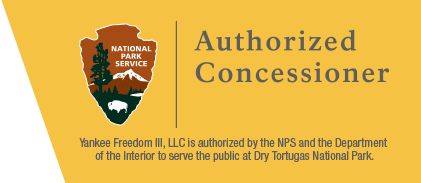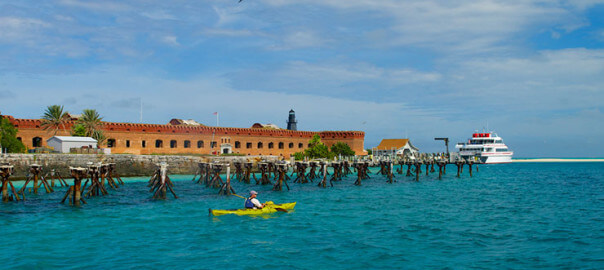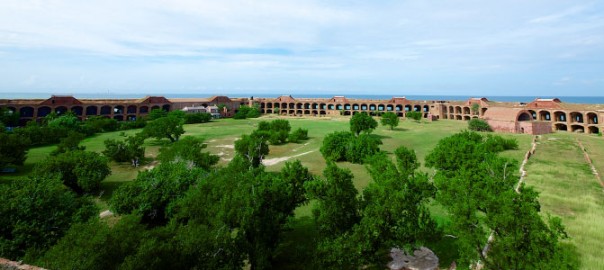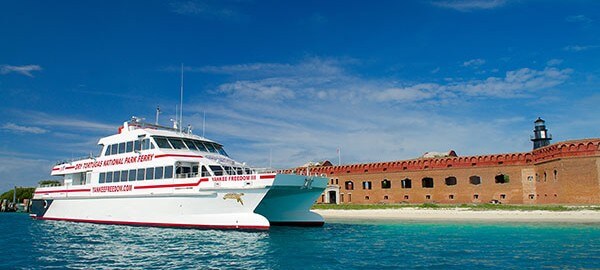The Tortugas Triangle
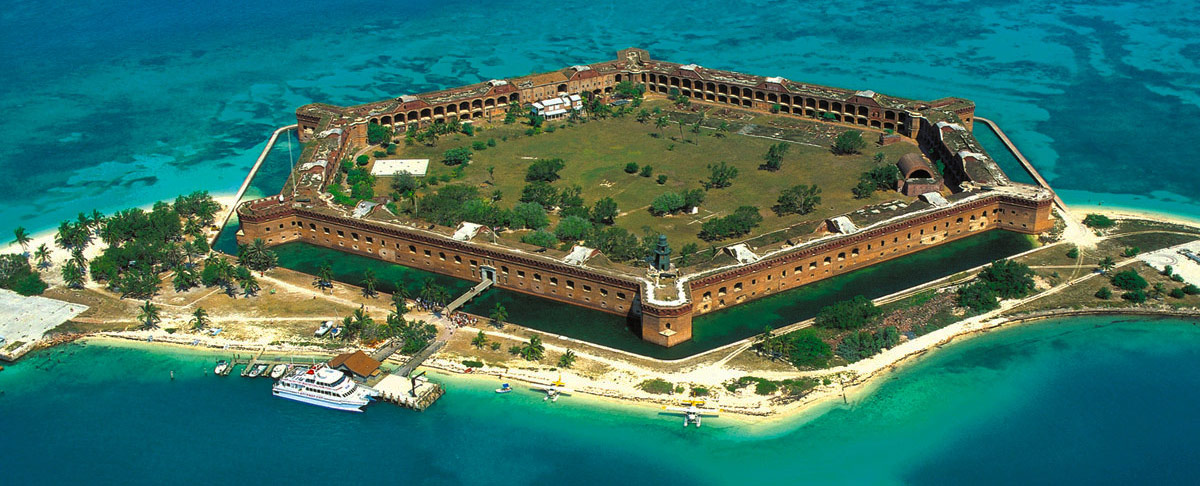
Daniel J. Lenihan
Lying in the Gulf of Mexico at its juncture with the Atlantic Ocean and Caribbean Sea, the Dry Tortugas were discovered by Ponce de Leon in 1513. “They reached the chain of islets which they named Tortugas [turtles],” wrote the Spanish historian Antonio de Herrera, “because in a short time of the night they took, in one of these islands, a hundred and seventy turtles, and might have taken many more if they wished, and also they took fourteen seals [probably the Caribbean monk seal, extinct since the 1950s], and there were killed many pelicans and other birds, of which there were five thousand.” Then as today, however, these islets of sand and coral rubble would not have yielded fresh water with which to wash down such bounty. Hence the “Dry” appellation, subsequently attached as a caution to mariners.
The study and preservation of this archeological resource has been the focus of my long-standing involvement with the Dry Tortugas. But it is by no means their only historic attraction. In the nineteenth century, the Dry Tortugas’s shifting sands were made to bear the weight of Fort Jefferson, probably the largest masonry structure in the Western Hemisphere.
Besides being a touchstone to the past, the Dry Tortugas are a laboratory for the study of coral and other marine life, since they are far enough from agricultural and industrial runoff to serve as a “control” for ecological changes. And, lying in the path of major bird migration routes, they have been a protected bird preserve and breeding ground since 1908. Blue-footed boobies, sooty terns, noddies, herons, egrets, gulls, brown pelicans, cormorants–all call the Dry Tortugas home for at least part of the year. Frigatebirds glide majestically, preying on fish and occasionally on the nests of other birds.
John James Audubon visited the Dry Tortugas in 1832, noting that the colonies of sooties and noddies were heavily exploited for food by “eggers” from Havana. He also noted that the eggs (and birds) were extremely good eating and much enjoyed by the crew of the government vessel that carried him. (The great naturalist and painter who practiced ornithology through the barrel of a gun was no sentimentalist when it came to obtaining specimens for his paint palette or his soft palate.)
I first visited the Dry Tortugas in 1974 as the National Park Service observer on a project under the field direction of Larry Murphy, then an underwater archaeologist for the state of Florida. During this escapade, I almost smashed my scooter headlight into the cascabel of an eighteenth-century cannon. Within an hour we were setting buoys and taking measurements; the abundance of shipwrecks had conspired to make our early morning joy ride into a working dive.
Fort Jefferson and the waters around it were already under the jurisdiction of the National Park Service, having been designated a National Monument in 1935 by President Franklin D. Roosevelt. In 1992, Congress made it a National Park, and today we are conducting a thorough archeological inventory, making use of the latest advances in global-positioning technology and geographical information system mapping of the bottom contours and composition. The project director is again Larry Murphy but, two decades later, he sports a gray beard that matches his green-and-gray National Park Service uniform.
Thus far, this nation’s record in caring for our own or other peoples’ history in our waters is not enviable. Craterlike holes are interspersed throughout huge areas of the shallows fringing the Straits of Florida. They were dug by modern harvesters of antiquities who deflect the wash from their boat propellers in search of Spanish gold and other precious booty. Their methods destroy the contextual associations and the more mundane artifacts that, if studied properly, can offer a snapshot of a particular culture at a given moment in history–the time of the wreck. For the most part, the damage is done by state-sanctioned treasure salvage operations. In contrast, the Parks Service’s philosophy is to record and map shipwrecks with very little disturbance, leaving the natural seascape intact so that the remains keep their archeological integrity.
Divers and snorkelers can still tour the sites for pleasure. For the “windjammer” site of a comparatively intact ninety-year-old wreck, a plasticized underwater guide map is available. Angelfish, triggers, and countless small wrasses and reef fishes abound.
Many of the undersea time capsules located and studied in the Dry Tortugas are related to the construction of Fort Jefferson, begun in 1845. The strategic usefulness of a major fortress sixty-five miles out in the Gulf of Mexico is often questioned. Couldn’t an enemy fleet sail around it? Records suggest the rationale was that the naval force that controlled the Dry Tortugas effectively controlled trade throughout the gulf Fresh in the corporate memory of the US. military when Fort Jefferson was conceived were the blockading fleets of the War of 1812. Would the British attempt to harbor a blockading fleet there during some hostilities in the future? How about the Spaniards, with whom tensions were beginning to mount? Then, eventually, there was the looming specter of the secession-minded southern states.
The fort (16- to 20-million-bricks’ worth by various estimates) was largely constructed by slave labor. Even during the Civil War, until the Emancipation Proclamation in 1863, the Union Army was contracting with slaveholders to snap the whip over the backs of slaves at Fort Jefferson. Their “wages” went to their owners. After the war, the fort served as a federal prison for deserters and political prisoners. (Dr. Samuel Mudd was imprisoned there for setting the broken leg of Lincoln’s assassin; he played a helpful role during one of the fort’s yellow fever epidemics.)
Although work on the fortress continued into the 1870s, its design was not modified to take into account the greater penetrating power of rifled cannon, which had made their dramatic debut during the Civil War. Larry Murphy theorizes that the superior range afforded by the huge Rodman smooth-bore cannons on the top of the fort were thought to be capable of warding off any attacking naval force. Wooden ships weren’t big enough to carry ordnance with sufficient range to threaten the fort. In fact, no shots were ever exchanged between the fort and any enemy. Is that a sign of failure or success? (The billions of dollars invested in ICBMs that still sit in their silos–failure or success?)
By 1875, Fort Jefferson was no longer viewed as having a potential strategic role, and work on it ceased. The harbor, however, served later as a coaling station. The Maine anchored there in 1898, on the way to Havana, where the battleship mysteriously exploded, helping to precipitate the Spanish-American War.
One might imagine that during the Civil War and years of construction activity at the fort, bird and turtle protection was not a major priority. But as in many military reservations, the exclusion of nonmilitary personnel worked to the advantage of wildlife. Protection was more deliberately extended in 1908, when the Dry Tortugas were declared a preserve and breeding ground for birds, and in 1935, when Fort Jefferson became a National Monument. About the time America entered World War II, Robert Budlong was installed as superintendent of the fort and its watery surroundings. He brought with him his own special flair for composing the requisite monthly reports to the director of the National Park Service.
The fort was in the middle of the German U-boat mayhem for the first six months of 1942. Navy fliers dropped newspapers to Budlong and his wife and made practice bombing runs at the islets. In an August 1943 missive, Budlong happily reported that the sooty tern population had increased greatly over the year before. “The air is thick with them-this is especially noticeable when the immediate vicinity is bombed or machine-gunned by some passing plane.”
In the same letter, Budlong also related and commented on the twisted logic of some egg poachers, who argued that the birds would not lay a second egg if the first one was not taken:
If you take the first egg, the birds tall lay the second, and thereby live to lay more eggs another year; but if the first egg isn’t taken, the birds won’t lay that second one, and the egg continues to grow and grow inside the parent bird until, swollen beyond recognition, it can’t lay the egg no matter how anxious it may be to lay it, and the bird dies. Or else it finally actually bursts, when of course it dies anyhow. And then where is your bird colony?Just a lot of males flying around in a bewildered manner and not doing any good. But I have spent hours watching for birds bursting in air, and I have watched in vain. I have made very careful autopsies of dead birds during two seasons, and am greatly relieved to report that no birds were found that died of egg-strangulation either.
Budlong considered the poachers’ arguments and, after due deliberation, rejected them. He made it known that “in the Dry Tortugas if you must eat eggs, fry them, boil them, or make them into an omelet or a cake, but don’t poach `em.”
In many respects things haven’t changed much at Fort Jefferson since the 1940s. Even now one must rely on mechanical clocks or battery-driven wrist watches to tell time, because one of the two generators runs too fast and the other too slow to run the government-issue electric clocks. in the age of satellite navigation and radio transmissions to probes at the other end of the solar system, it is hard to finish most five-minute telephone conversations from the fort without the line going dead.
As for poachers, they still play a role in the Dry Tortugas, but they tend to avoid the birds and green and loggerhead turtle crawls in favor of the underwater world–they know the park can’t keep a ranger behind every coral head. Too often, rangers find the mutilated carapaces of lobsters where they have been killed by poachers who simply tipped the prized tail off the living animal.
But the most endangered species of all in Florida waters are the shipwrecks. Everything outside the National Park jurisdiction is open for grabs with the right permits. Even the caretakers of the new Florida Keys National Marine Sanctuary, run by the National Oceanographic and Atmospheric Administration, feel compelled by law and local public opinion to acknowledge treasure hunters as legitimate stakeholders in the resource. No one would entertain such thoughts about public cultural resources on dry land.
The argument on behalf of treasure hunters runs something like this: “The wrecks aren’t doing anybody any good out there, and they will all soon be gone owing to the pummeling of wind and wave. So why not reward the adventurous entrepreneurs who find them and bring their sunken treasures back for every-one to enjoy?” Actually, shipwrecks tend to reach a chemical equilibrium with corrosive forces in the ocean by the time they become historic. A National Park Service study of the effects of Hurricane Andrew on historic shipwrecks at Biscayne National Park revealed negligible damage to sites that were right in the path of this destructive storm.
So far no treasure hunter has argued, like the egg poachers, that if you remove one artifact, another will grow in its place. But with the Coast Guard intercepting Cubans seeking to make landfall in the United States, many new wrecks have recently collected in the straits between Cuba and the Dry Tortugas. In 1994, television news programs featured images of small boats and rafts sending up plumes of smoke. Burned to the waterline, the hulks soon submerged and settled to the sea bottom, leaving tantalizing remains,to be explained by some future archeologist.
COPYRIGHT 1997 Natural History Magazine, Inc.
COPYRIGHT 2004 Gale Group
